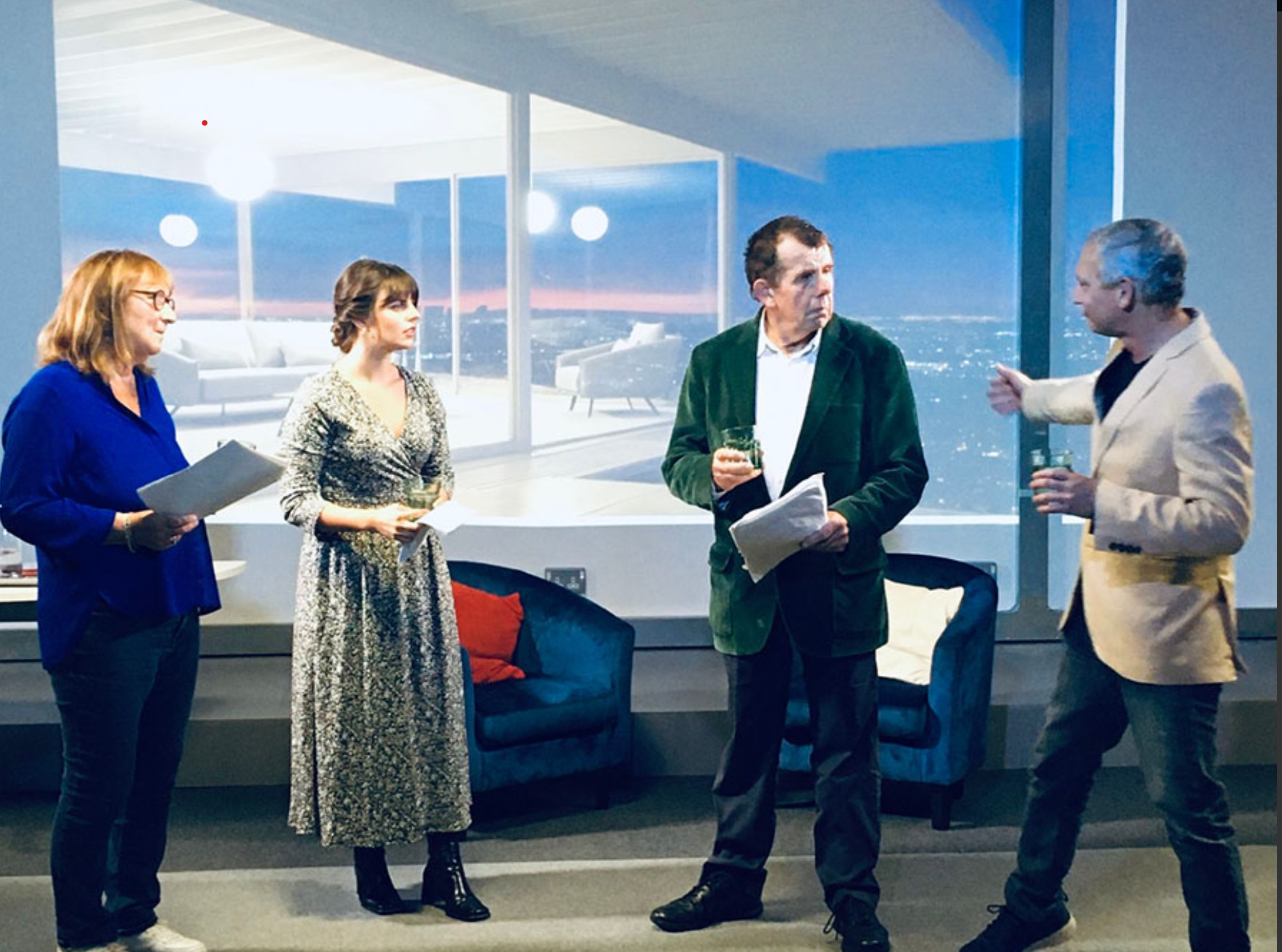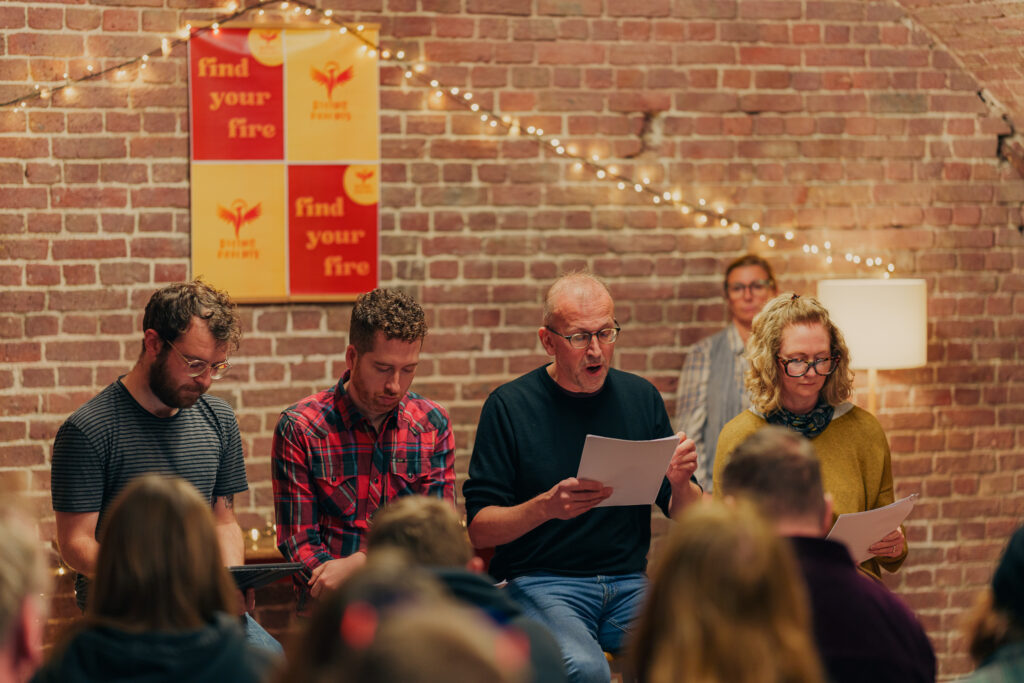The first scene of a potential full-length film based on my script When All the Crowds Have Gone was workshopped in Brighton at Wired Sussex’s innovation hub, Fusebox. I have a residency at Fusebox in order to help develop the immersive side of my work, and the hub’s large event space was the perfect location for the opening scene of the script, which is set in a rehearsal studio as actors prepare a script for performance.
Together with my co-producer Marc Green, who is also directing, the aim was to try out their plans for a full production, and investigate several new ideas made possible with a 360 camera. To test the concept, several actors who expressed an interest in experimenting with 360 film making were invited to the workshop – John Locke, Kirsten Callaghan, Justin Hayward, and Jenny Knight.
As the scenario was new to most of these experienced actors, the event had a genuine feel of discovery to which they brought their knowledge from both theatre and film, in order to create something new. With the help of Chris Chowen and Chandler Dagg from Fusebox, the scene was captured and edited after several rehearsals.
We found that the 360 filming style – where ‘you’ as the viewer are inside and a part of the story, but don’t have to interact – works well with the ethos to marry ideas from both theatre and film. A digital image is produced, but the viewer is watching and observing from a fixed point over a sustained period of time. This means ‘new’ conventions can be established and played with, regarding how the actors move and interact with the camera and each other in the 360 space. During the workshop, certain narrative techniques were tested, which were successful and open up possibilities for adding layers to the story – which is itself to do with storytelling and ways of communicating. The viewer remains an observer, but comes to realise that their presence is in fact integral to the world they have entered.
In terms of presentation, practical aspects must now be considered such as viewer comfort when using a headset. When looking to the whole film, each scene could be treated as an episode, giving the viewer an option for natural breaks to watch the production as they would a series.










